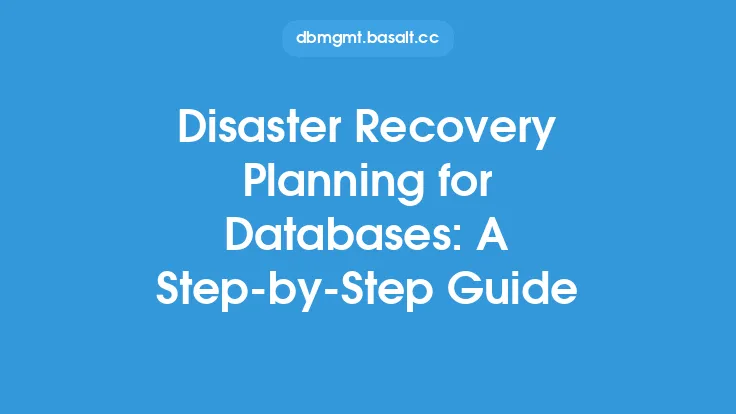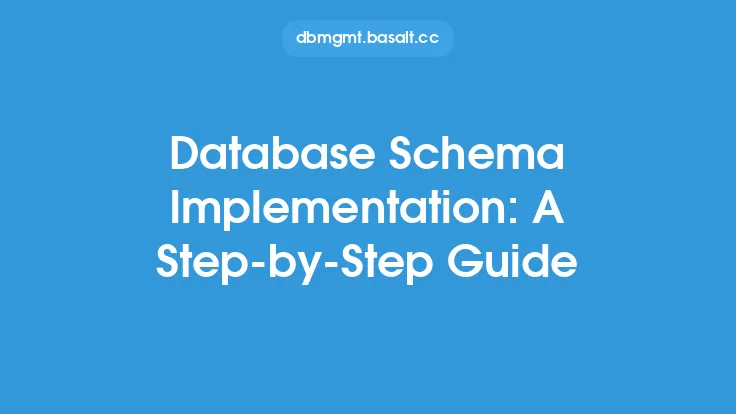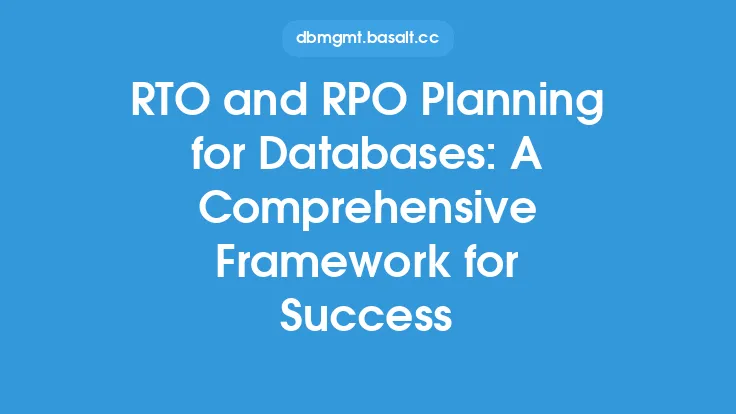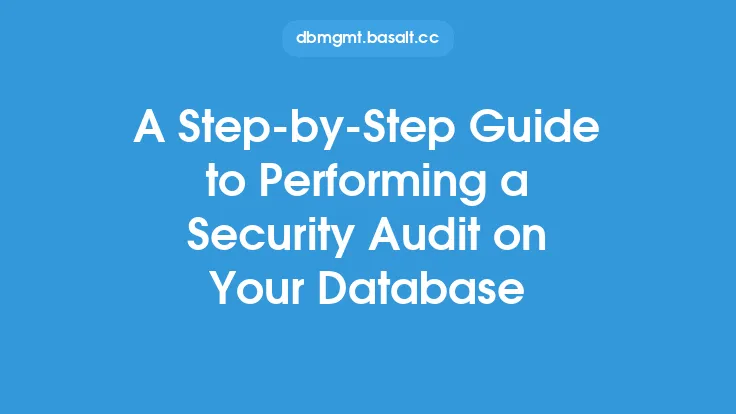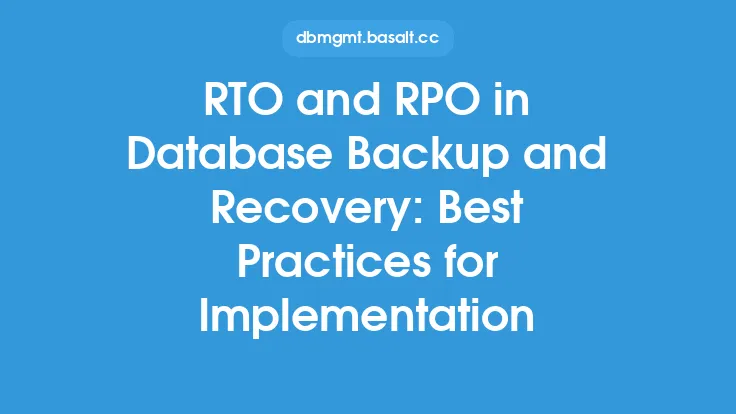To calculate Recovery Time Objective (RTO) and Recovery Point Objective (RPO) effectively, database administrators must understand the intricacies of these metrics and how they apply to their specific database environments. RTO and RPO are fundamental components of any database recovery plan, as they define the acceptable downtime and data loss thresholds for an organization. In this step-by-step guide, we will delve into the process of calculating RTO and RPO, providing database administrators with the tools and knowledge necessary to develop a comprehensive recovery strategy.
Introduction to RTO and RPO Calculations
Calculating RTO and RPO involves a thorough analysis of an organization's database infrastructure, business requirements, and tolerance for downtime and data loss. RTO refers to the maximum amount of time that an organization can afford to be without access to its database, while RPO represents the maximum amount of data that can be lost in the event of a disaster. To calculate these metrics, database administrators must consider various factors, including the type of database, the volume of data, and the impact of downtime on business operations.
Assessing Business Requirements
The first step in calculating RTO and RPO is to assess the business requirements of the organization. This involves identifying the critical databases and applications that are essential to business operations, as well as the potential impact of downtime on revenue, customer satisfaction, and reputation. Database administrators should engage with stakeholders to determine the acceptable downtime and data loss thresholds for each database, taking into account factors such as transaction volume, data velocity, and regulatory compliance.
Evaluating Database Infrastructure
The next step is to evaluate the database infrastructure, including the hardware, software, and network components that support the database. This involves assessing the performance, capacity, and redundancy of the infrastructure, as well as the availability of backup and recovery systems. Database administrators should also consider the complexity of the database environment, including the number of databases, instances, and clusters, as well as the presence of any virtualization or cloud-based technologies.
Calculating RTO
To calculate RTO, database administrators should consider the following factors:
- Database restart time: The time it takes to restart the database after a failure.
- Data recovery time: The time it takes to recover data from backups or other sources.
- System restoration time: The time it takes to restore the database system, including any necessary software or hardware repairs.
- Verification and validation time: The time it takes to verify and validate the integrity of the recovered data.
Using these factors, database administrators can estimate the RTO for each database, taking into account the specific recovery procedures and technologies in place.
Calculating RPO
To calculate RPO, database administrators should consider the following factors:
- Data change rate: The rate at which data is modified or updated in the database.
- Backup frequency: The frequency at which backups are performed, including full, incremental, and differential backups.
- Data retention period: The length of time that data is retained in backups or other storage systems.
- Data loss tolerance: The maximum amount of data that can be lost in the event of a disaster.
Using these factors, database administrators can estimate the RPO for each database, taking into account the specific backup and recovery procedures in place.
Example RTO and RPO Calculations
To illustrate the calculation of RTO and RPO, let's consider an example. Suppose we have an e-commerce database that processes 1,000 transactions per hour, with a data change rate of 10% per hour. The database is backed up every 4 hours, with a full backup performed every 24 hours. The organization has a tolerance for 2 hours of downtime and 1 hour of data loss.
Based on these factors, we can estimate the RTO and RPO as follows:
RTO = 2 hours (downtime tolerance)
RPO = 1 hour (data loss tolerance)
Using these estimates, we can develop a recovery plan that ensures the database is restored within 2 hours of a failure, with a maximum of 1 hour of data loss.
Implementing RTO and RPO
Once the RTO and RPO have been calculated, database administrators can implement a recovery plan that meets these objectives. This may involve:
- Developing backup and recovery procedures: Creating procedures for backing up and recovering data, including full, incremental, and differential backups.
- Implementing high availability technologies: Implementing technologies such as clustering, replication, and mirroring to ensure high availability and minimize downtime.
- Conducting regular testing and validation: Conducting regular testing and validation of recovery procedures to ensure that they meet the RTO and RPO objectives.
- Monitoring and reporting: Monitoring and reporting on database performance and availability, including any downtime or data loss incidents.
Conclusion
Calculating RTO and RPO is a critical step in developing a comprehensive database recovery plan. By understanding the business requirements, evaluating the database infrastructure, and calculating the RTO and RPO, database administrators can develop a recovery strategy that meets the needs of the organization. By implementing backup and recovery procedures, high availability technologies, and regular testing and validation, database administrators can ensure that the database is restored quickly and with minimal data loss in the event of a disaster.
